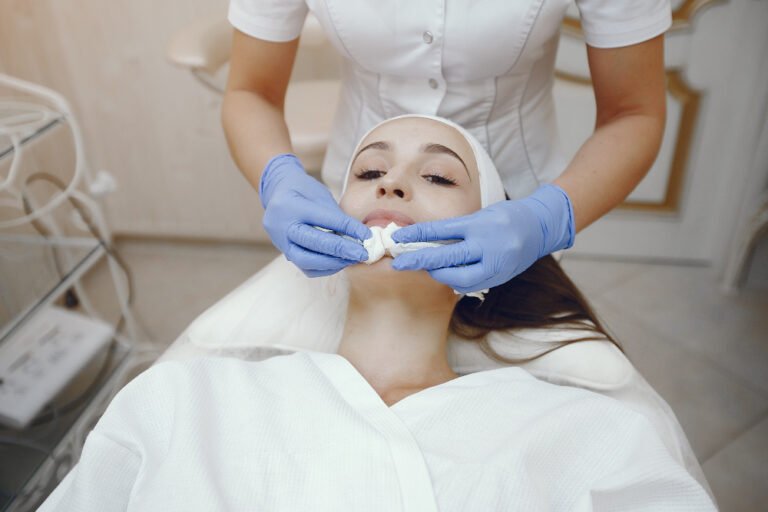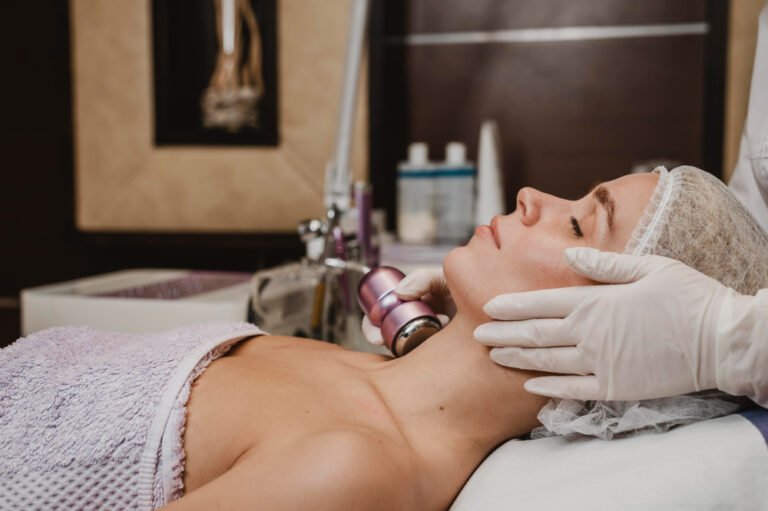The menstrual cycle is a remarkable and complex monthly process that prepares a woman’s body for the possibility of pregnancy. Lasting an average of 28 days (but ranging from 21 to 35 days in healthy individuals), the cycle involves coordinated changes in the brain, ovaries, uterus, and hormones.
Understanding each phase of the menstrual cycle helps you recognize what’s normal, identify possible issues, and even optimize fertility, mood, and well-being.
🔄 Overview: The 4 Main Phases of the Menstrual Cycle
- Menstrual Phase (Days 1–5) – Shedding the uterine lining
- Follicular Phase (Days 1–13) – Follicle development and estrogen rise
- Ovulation Phase (Around Day 14) – Release of a mature egg
- Luteal Phase (Days 15–28) – Progesterone surge and uterine preparation
Note: The exact days vary between individuals. The cycle is counted from the first day of bleeding (Day 1) to the day before the next period starts.
🩸 1. Menstrual Phase (Day 1 to ~Day 5)
What Happens
- This is when your period begins.
- The uterus sheds its inner lining (endometrium) because no fertilized egg implanted during the previous cycle.
- Blood, mucus, and tissue pass through the cervix and out through the vagina.
Hormonal Activity
- Estrogen and progesterone levels drop, triggering menstruation.
- Low hormone levels can affect mood, energy, and appetite.
How You Might Feel
- Cramping, bloating, fatigue
- Irritability or sadness
- Lower energy levels
Tips
- Prioritize rest, hydration, and gentle movement (like yoga or walking)
- Use heat packs or NSAIDs for cramps
🌱 2. Follicular Phase (Day 1 to ~Day 13)
Begins on the same day as menstruation, but continues after bleeding ends.
What Happens
- The brain’s pituitary gland releases follicle-stimulating hormone (FSH).
- FSH prompts the ovaries to grow follicles (fluid-filled sacs containing immature eggs).
- One dominant follicle matures, preparing for ovulation.
- The uterine lining begins to rebuild itself.
Hormonal Activity
- Estrogen rises, thickening the uterine lining (endometrium) to support a potential pregnancy.
- Cervical mucus becomes clearer and stretchy, a sign of fertility.
How You Might Feel
- Increased energy, better concentration, elevated mood
- Skin may look clearer due to rising estrogen
Tips
- Great time for exercise, productivity, and social engagement
- Fertility awareness methods often begin tracking here
🥚 3. Ovulation Phase (~Day 14 in a 28-Day Cycle)
What Happens
- A surge in luteinizing hormone (LH) triggers the release of a mature egg from the dominant follicle in the ovary.
- The egg travels down the fallopian tube, where it can be fertilized for up to 24 hours.
Hormonal Activity
- LH and estrogen peak
- The body becomes temporarily more fertile
How You Might Feel
- Possible mild pelvic pain or twinge (called mittelschmerz)
- Heightened libido, cervical mucus becomes egg-white-like
- Breast tenderness or slight bloating
Tips
- If you’re trying to conceive, this is your most fertile window
- Ovulation predictor kits (OPKs) can detect LH surges
🍂 4. Luteal Phase (Days 15 to ~28)
What Happens
- After ovulation, the empty follicle becomes the corpus luteum, which secretes progesterone.
- Progesterone stabilizes the uterine lining in case of pregnancy.
- If no fertilized egg implants, the corpus luteum disintegrates, causing hormone levels to fall and triggering menstruation.
Hormonal Activity
- Progesterone rises, followed by a drop if there’s no pregnancy
- Estrogen remains moderate, then declines
How You Might Feel
- PMS symptoms may occur: bloating, mood swings, breast tenderness, fatigue, cravings
- Lower energy, potential irritability, or anxiety
Tips
- Focus on self-care, balanced nutrition, and sleep
- Track PMS symptoms — severe cases may indicate PMDD (premenstrual dysphoric disorder)
📊 Cycle Summary Chart
| 💡 | Days (Approx.) | Key Hormones | Main Events |
|---|---|---|---|
| Menstrual | 1–5 | ↓ Estrogen & Progesterone | Shedding of uterine lining (your period) |
| Follicular | 1–13 | ↑ FSH, ↑ Estrogen | Follicle and egg development |
| Ovulation | ~14 | ↑ LH, Peak Estrogen | Release of mature egg |
| Luteal | 15–28 | ↑ Progesterone | Uterus prepares for pregnancy, PMS may start |
💡 Why Understanding Your Cycle Matters
- Helps you identify signs of hormonal imbalance or irregularities
- Empowers you to track fertility and ovulation
- Makes it easier to manage PMS, cramps, and mood changes
- Provides insight into conditions like PCOS, thyroid issues, or amenorrhea
⚠️ When to Talk to a Doctor
See your healthcare provider if you experience:
- Very irregular or absent periods
- Severe PMS or PMDD symptoms
- Painful ovulation or heavy menstrual bleeding
- Difficulty conceiving after 6–12 months of trying
🧠 Final Thoughts: Know Your Cycle, Know Your Body
The menstrual cycle is a vital sign of your reproductive and overall health. By learning how each phase works, you can better understand your symptoms, optimize wellness, and seek help when things feel out of balance.



